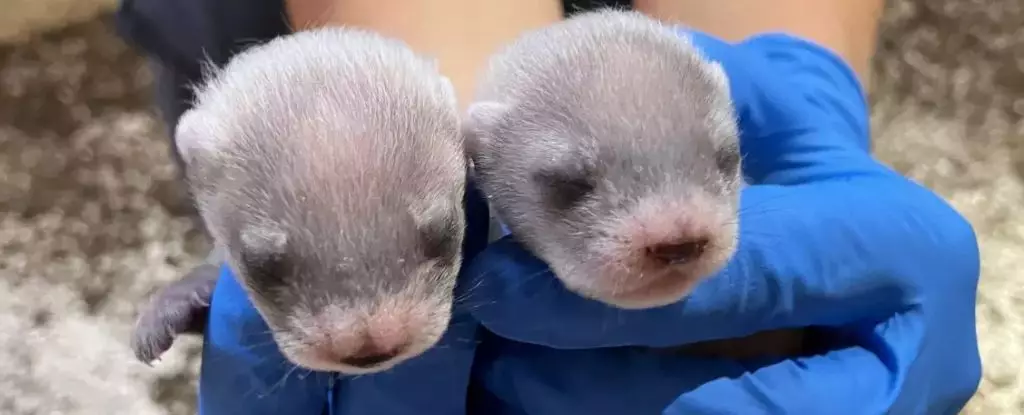The black-footed ferret (Mustela nigripes) is a fascinating case study in the ongoing battle against extinction. Once considered extinct as of 1979, the species has seen a remarkable revival through the innovative use of cloning techniques and dedicated conservation efforts. Originating from an exceedingly small population, notably a mere 18 ferrets captured from Wyoming, the journey to stabilize and increase this species’ population over the last four decades has been arduous. Cloning the black-footed ferret was not merely a scientific endeavor; it was an emotional and symbolic undertaking aimed at rewriting the narrative of extinction.
Cloning, a controversial yet groundbreaking technology, has sparked a renewed interest in preserving endangered species. In 2018, scientists successfully cloned a black-footed ferret named Antonia from the tissue of Willa, who passed away in 1988. This event not only represented a triumph in scientific achievement but also provoked discussions about the ethical implications and efficiency of using such technologies in conservation strategies. Notably, with the birth of two healthy pups—one male and one female—Antonia’s story encapsulates both the promise and the complexity of using cloning as a tool for wildlife recovery.
The genetic condition of the current black-footed ferret population poses serious questions about their long-term survival. The existing wild population is afflicted with low genetic diversity, widespread disease, and environmental challenges, such as habitat loss and dwindling prairie dog prey. Antonia’s cloning was more than a scientific novelty; it introduced a genetic variety that could potentially enhance the resilience of future generations. The cloning team noted that Antonia’s unique genetic composition exhibits three times the genetic variability compared to her living counterparts. This variation is paramount; genetic diversity serves as a cornerstone for the health and survival of species.
However, critics highlight that while enhancing genetic diversity through cloning offers hope, it cannot address the profound ecological issues that have led to the endangerment of species in the first place. Conservation researchers caution that an overreliance on cloning might shift focus away from tackling the underlying causes of habitat destruction and the impacts of human activities. With creatures like the black-footed ferret inhabiting increasingly fragmented ecosystems, the long-term viability of these species hinges not only on laboratory successes but also on a holistic restoration of their natural habitats.
The monumental task of reintroducing cloned animals into the wild is fraught with uncertainties. While Antonia’s new offspring are a reason for optimism, the reality remains that their survival in the wild is not guaranteed. Research suggests that conservation efforts must prioritize the cultivation and protection of sufficient habitats necessary for diverse wildlife populations to thrive. This need encompasses not only the black-footed ferret but also countless other threatened species sharing similar fates caused by habitat encroachment and climate change.
David Jachowski, a wildlife ecologist, champions the importance of integrating cloning technologies with comprehensive habitat restoration initiatives. “In the fog of excitement surrounding this new tool,” he writes, “we must maintain a strong focus on addressing the issues that cause most species to become endangered or extinct initially.” Such a statement underscores the notion that the promise of cloning should be cautiously balanced against a pressing need for practical conservation approaches.
As the landscape of wildlife conservation continues to evolve, it becomes evident that cloning represents both a potential lifeline and a complex challenge. The case of Antonia and her pups may herald a new chapter for extinct and endangered species, but it simultaneously serves as a reminder of the intricate interplay between scientific advancement and ecological stewardship. Efforts to clone endangered species could ultimately prove ineffective without integrated strategies that prioritize habitat conservation and wildlife management.
The journey of the black-footed ferret illuminates the broader dialogue surrounding conservation technologies. While the scientific community celebrates milestones in cloning, it is crucial to refocus on the paramount importance of biodiversity, habitat preservation, and proactive measures against human-wildlife conflict. The combination of innovative genetic approaches and traditional conservation methods may yield the most hopeful future for endangered species, ensuring their survival long past the laboratory in the harsh yet beautiful wilds they once called home.

Leave a Reply